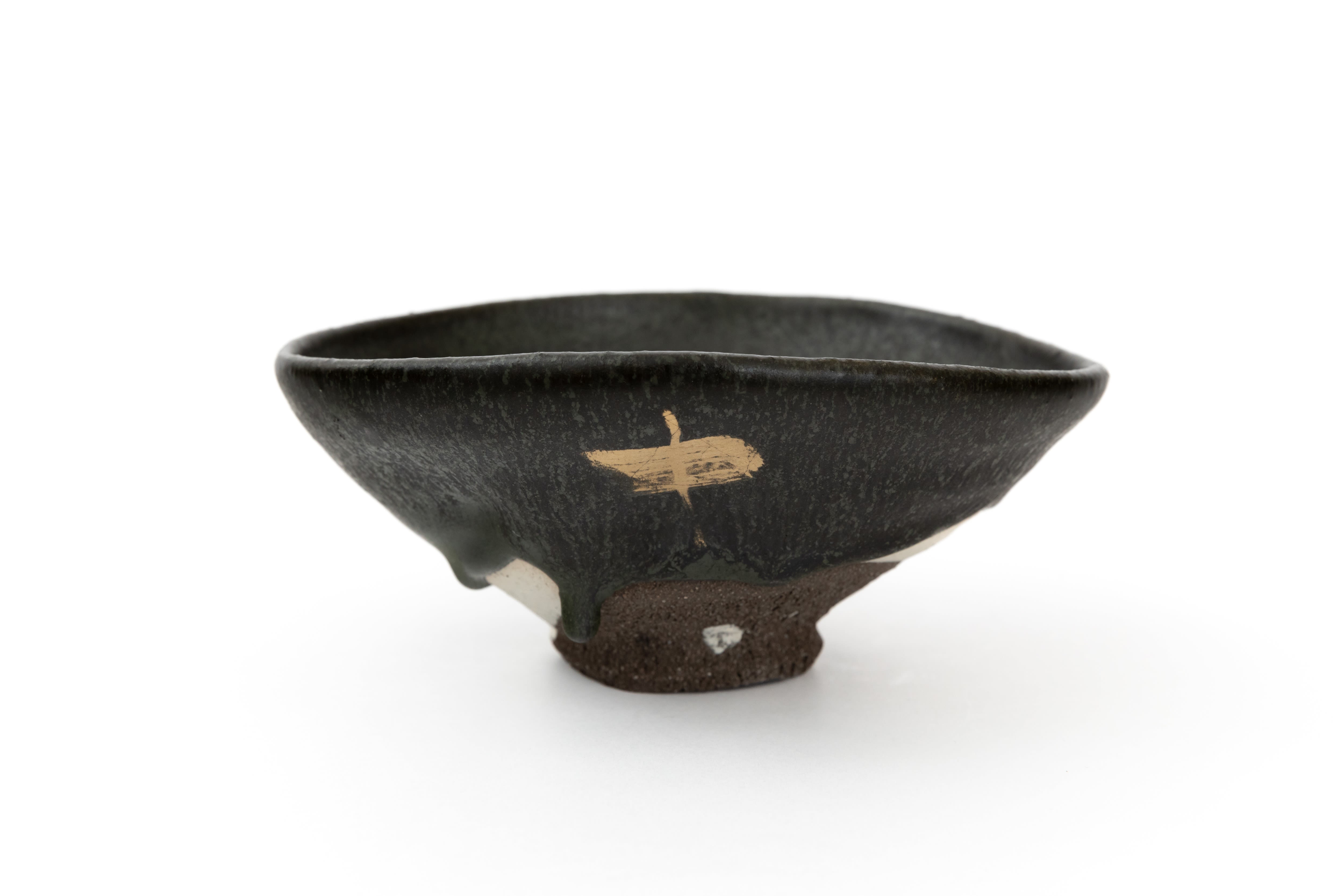
The ceramicist son of a musician, Ryusuke Asai has developed a creative language all his own. Asai told Ippodo Gallery about the inspirations and experiences that inform his contemporary chawan artworks. On view now, experience Asai's refreshing innovations in Magic of the Tea Bowl at Ippodo Gallery, 32 E. 67th St., 3rd Floor.

Ryusuke Asai, Souten Tea Bowl 'Whistle,' (C25640)
Ryusuke Asai focuses strongly on the relationships between colors, activating the surface of the tea bowl with vibrant glass-like glazes over stoneware. His creations reference the extensive mythology of the Japanese archipeligo, animating the age-old tales in ceramic.
Question 1:
Do you practice tea in daily life? Please share your chanoyu routine, or a beloved memory of chanoyu.
Asai:
Yes, I am practicing with Mushakoji Senke. I wouldn't say that I am an extraordinary cha-jin (tea practitioner), but I do my best. (^0^;)
I believe the primary essence of the tea ceremony is "hospitality." It all comes down to whether the guests can relax and enjoy themselves in the tearoom. Sometimes tea ceremonies become focused on strict rules and adherence to formality. It creates nerves amongst the guests and turns the tea gathering only into a self-satisfaction experience for the hosts. It is quite unfortunate.
For example, I consider a tea ceremony as theater. The goods are placed as stage pieces and costumes, whereas the host and guests are performers. In the 茶室(chashitsu), the play's script would be the choreography and conversations. Fundamentally, the theater and play are for audiences, not for the organizers. I believe the role of the tea master within the tea ceremony should be to foster all of those elements for the guests.
Ultimately, The best part of the event involves the "Miracle of Presentation;” how to design and incorporate hospitality into the whole experience with the occasion.

Ryusuke Asai, Kiln-fired tea bowls

Ryusuke Asai, Bisque fired tea bowls removed from the kiln
Q2:
Please describe the influences that inspire your work.
Asai:
I get inspiration from all social phenomena, including music, literature, nature, science, and even war, except pottery. While the tea bowl culture possesses a profound history of craftsmanship, the influences of earlier generations never fail to sway my ideas. Nevertheless, I continuously challenge myself to explore what I can and strive to innovate as a contemporary artist rather than tracing the glories of past artists. The answers lie within my diverse sources of inspiration, outside the realm of pottery.

Ryusuke Asai, Black Karatsu Tea Bowl "Falling Gingko" - 黒唐津茶碗「銀杏散る」(C25641)
Q3:
Please describe the qualities do you most treasure in a tea bowl—be that shape, color, texture, or history, style, and type of clay?
Asai:
My primary focus is to evoke excitement in both tea masters and audiences by making bowls look and feel amazing. At the same time, I also prioritize the theory called Yoh no Bi; The philosophical concept of beauty involves the harmonious union of design and utility, resulting in attachment fostered within daily life and objects. If I ignore function and only care about design, I may risk losing the true beauty of the work. Therefore, chawan should balance practicality as a functional object and artistic expression as a work of art.
The first element of beauty is user-friendliness. I select the best clay and firing method when crafting a tea bowl. The right choice ensures the user's safety by preventing burns and comfort during use. The smooth and pleasant touch is an essential quality for a functional tool.
The second aspect I care about is the color and texture, which brought up the vibrant green of matcha. I eagerly try unique glazes for the bowls to achieve the best combination. Yet, refocusing my attention, I pick the final vision that remains the beauty of Yoh no Bi.
At times, I find myself overly focused on the functional aspect of my work, which limits my ability to express my artistic and creative nature. Nevertheless, only a piece that meets the standards of a practical tool can represent my art piece, showcasing my professional mindset as a toolmaker.

Ryusuke Asai's chawan with hot matcha tea
Q4:
Please share with us how you prepare to make a new piece; how do you decide on the materials and direction for the idea?
Asai:
In response to this question, I continue daydreaming until I can visualize my expression, including its colors, shapes, and objectives. The moment is the best time to start touching materials.
To begin, I mix clay as the first step. I always mix my own soil since any single-origin material doesn’t satisfy me.
I generally do my work with the potter's wheel. The great thing about Potter's Wheel is it gives my work significant momentum. However, the production process never goes as planned because of the control difficulties. I often liken it to a baseball player with a .250 batting average.
Both calligraphers and potters share a similar sense of speed in the creation process. We repeatedly go through the one-shot process until we are satisfied with the results. Finally, we present only one artwork from thousands of trial pieces.

Ryusuke Asai's chawan with hot matcha tea
The contemporary ceramic work of Ryusuke Asai join's Ippodo Gallery's annual exhibition Magic of the Tea Bowl, on view now at Ippodo Gallery NY until July 13. Asai's skyblue glazes and asymetrical form will expose you to the wonderous nature of Japanese aethetics—we look forward to welcoming you!
